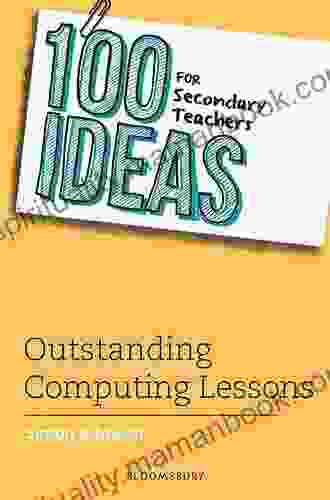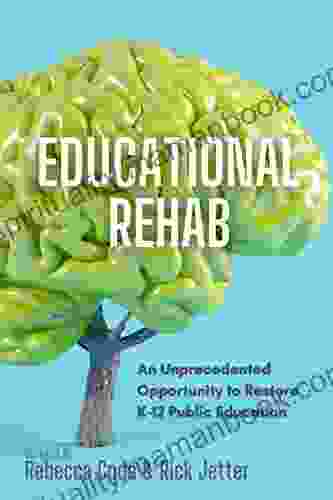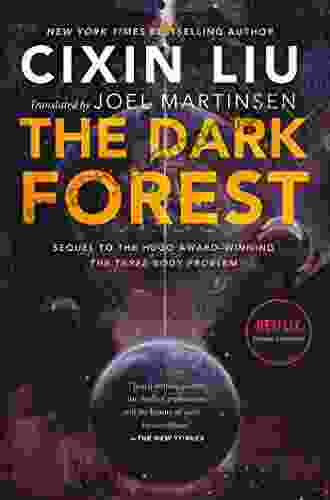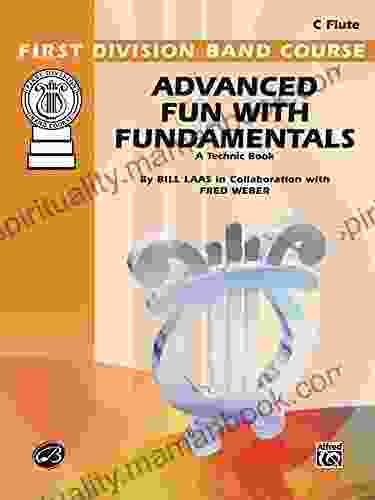Outstanding Computing Lessons: 100 Ideas for Teachers

In today's digital age, computing skills are essential for students' success in school, the workplace, and beyond. As educators, it is our responsibility to provide our students with the knowledge and skills they need to thrive in this rapidly evolving technological landscape.
This article offers 100 inspiring lesson ideas to elevate your computing lessons and empower students with essential digital skills. Discover engaging activities, creative projects, and innovative approaches that will ignite their passion for technology and prepare them for the future.
4.7 out of 5
| Language | : | English |
| File size | : | 778 KB |
| Text-to-Speech | : | Enabled |
| Screen Reader | : | Supported |
| Enhanced typesetting | : | Enabled |
| Word Wise | : | Enabled |
| Print length | : | 229 pages |
1. Coding Basics
- Unplugged Coding: Introduce students to the principles of coding without using computers. Use games, puzzles, and other activities to teach concepts such as sequences, loops, and conditionals.
- Hour of Code: Engage students with fun and interactive coding challenges. Hour of Code offers a wide range of activities suitable for all ages and experience levels.
- Scratch: Create engaging stories, games, and animations using Scratch, a block-based programming language designed for beginners.
- Python: For more advanced students, introduce Python, a versatile programming language used in web development, data science, and artificial intelligence.
- Java: Teach students how to develop mobile apps, video games, and other applications using Java, a popular object-oriented programming language.
2. Creative Projects
- Digital Storytelling: Have students create their own digital stories using text, images, audio, and video. Encourage them to use multimedia tools such as Adobe Spark or iMovie.
- Computer-Generated Art: Explore computer-generated art techniques such as fractals, generative art, and digital painting. Use software like Processing or Paint 3D.
- 3D Modeling: Teach students the basics of 3D modeling and design using software such as Tinkercad or Blender. Have them create their own models or design objects for 3D printing.
- Web Design: Introduce students to the principles of web design and have them create their own websites. Use tools like Wix or Weebly to make the process accessible to all skill levels.
- Game Development: Engage students in the exciting world of game development. Use game engines such as Unity or Unreal Engine to create their own games.
3. Innovative Technologies
- Robotics: Introduce students to robotics using educational robots such as Lego Mindstorms or VEX IQ. Have them build and program their own robots to perform various tasks.
- Artificial Intelligence: Explore the basics of artificial intelligence and machine learning. Use tools like Google AI Experiments to teach students how AI can solve real-world problems.
- Virtual Reality: Immerse students in virtual reality experiences using VR headsets like Oculus Rift or HTC Vive. Show them how VR can be used for education, entertainment, and more.
- Augmented Reality: Bring the digital world into the physical world using augmented reality apps like ARKit or ARCore. Have students create their own AR experiences and explore the potential of this emerging technology.
- Blockchain: Introduce students to the concepts of blockchain and cryptocurrency. Discuss its potential applications in finance, supply chain management, and more.
4. Real-World Applications
- Data Literacy: Teach students how to collect, analyze, and visualize data using tools like Google Sheets or Excel. Show them how data can be used to make informed decisions and solve problems.
- Cybersecurity: Educate students about the importance of cybersecurity and how to protect themselves online. Discuss topics such as password security, phishing, and data privacy.
- Digital Citizenship: Foster digital citizenship by teaching students about online etiquette, responsible social media use, and combating cyberbullying.
- Computational Thinking: Integrate computational thinking into your lessons by having students apply problem-solving and algorithmic thinking to real-world situations.
- STEAM Projects: Combine computing with other subjects such as science, technology, engineering, art, and math to create interdisciplinary projects that engage students in authentic learning experiences.
5. Assessment and Differentiation
- Formative Assessment: Use formative assessment techniques such as exit tickets, quizzes, and peer feedback to monitor student progress and provide timely feedback.
- Choice Boards: Provide students with a choice of activities to demonstrate their learning. This allows for differentiation and caters to different learning styles.
- Projects: Assign projects that allow students to apply their skills and knowledge in creative and meaningful ways. Projects can be differentiated based on student interests and abilities.
- Self-Reflection: Encourage students to reflect on their own learning through self-assessment and goal-setting.
- Data-Driven Instruction: Use student assessment data to inform your instruction and make adjustments as needed to meet the needs of all learners.
Empowering students with computing skills is essential for their success in the 21st century. By implementing these 100 lesson ideas into your classroom, you can ignite their passion for technology, prepare them for the future, and foster their critical thinking, problem-solving, and creativity.
Remember, the key to outstanding computing lessons lies in creating a supportive and engaging learning environment where students feel challenged, inspired, and motivated to explore the exciting world of technology.
4.7 out of 5
| Language | : | English |
| File size | : | 778 KB |
| Text-to-Speech | : | Enabled |
| Screen Reader | : | Supported |
| Enhanced typesetting | : | Enabled |
| Word Wise | : | Enabled |
| Print length | : | 229 pages |
Do you want to contribute by writing guest posts on this blog?
Please contact us and send us a resume of previous articles that you have written.
 Top Book
Top Book Novel
Novel Fiction
Fiction Nonfiction
Nonfiction Literature
Literature Paperback
Paperback Hardcover
Hardcover E-book
E-book Audiobook
Audiobook Bestseller
Bestseller Classic
Classic Mystery
Mystery Thriller
Thriller Romance
Romance Fantasy
Fantasy Science Fiction
Science Fiction Biography
Biography Memoir
Memoir Autobiography
Autobiography Poetry
Poetry Drama
Drama Historical Fiction
Historical Fiction Self-help
Self-help Young Adult
Young Adult Childrens Books
Childrens Books Graphic Novel
Graphic Novel Anthology
Anthology Series
Series Encyclopedia
Encyclopedia Reference
Reference Guidebook
Guidebook Textbook
Textbook Workbook
Workbook Journal
Journal Diary
Diary Manuscript
Manuscript Folio
Folio Pulp Fiction
Pulp Fiction Short Stories
Short Stories Fairy Tales
Fairy Tales Fables
Fables Mythology
Mythology Philosophy
Philosophy Religion
Religion Spirituality
Spirituality Essays
Essays Critique
Critique Commentary
Commentary Glossary
Glossary Bibliography
Bibliography Index
Index Table of Contents
Table of Contents Preface
Preface Introduction
Introduction Foreword
Foreword Afterword
Afterword Appendices
Appendices Annotations
Annotations Footnotes
Footnotes Epilogue
Epilogue Prologue
Prologue Carol Peterson
Carol Peterson Debbie Bliss
Debbie Bliss Mick Herron
Mick Herron Roman Payne
Roman Payne Rhonda Byrne
Rhonda Byrne Laura Esquivel
Laura Esquivel Kenneth J Smith
Kenneth J Smith Sunny Hundal
Sunny Hundal Kinshasha Holman Conwill
Kinshasha Holman Conwill Kelly Thompson
Kelly Thompson Patrick Rush
Patrick Rush John Bloom
John Bloom Rhonda Lee Carver
Rhonda Lee Carver Miss Aida
Miss Aida Sharon Walpole
Sharon Walpole Bookcaps
Bookcaps Alice Ormsbee Beltran
Alice Ormsbee Beltran Lisa J Davis
Lisa J Davis Yana Toboso
Yana Toboso Adrian Kulp
Adrian Kulp
Light bulbAdvertise smarter! Our strategic ad space ensures maximum exposure. Reserve your spot today!
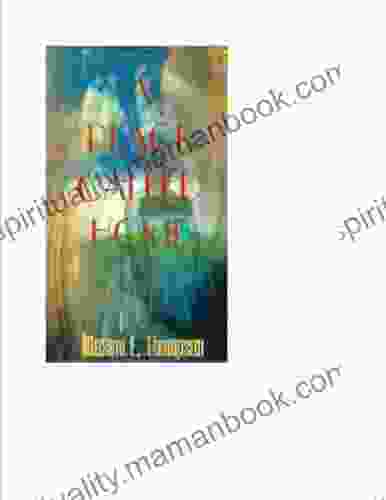
 Cooper BellA Literary Journey: Delve into a Collection of Short Stories That Captivates...
Cooper BellA Literary Journey: Delve into a Collection of Short Stories That Captivates... Desmond FosterFollow ·2.5k
Desmond FosterFollow ·2.5k Owen SimmonsFollow ·6.8k
Owen SimmonsFollow ·6.8k Phil FosterFollow ·14.4k
Phil FosterFollow ·14.4k Victor HugoFollow ·17.5k
Victor HugoFollow ·17.5k Dillon HayesFollow ·2.7k
Dillon HayesFollow ·2.7k Marcel ProustFollow ·8.2k
Marcel ProustFollow ·8.2k Matthew WardFollow ·17.1k
Matthew WardFollow ·17.1k Jim CoxFollow ·18.2k
Jim CoxFollow ·18.2k

 Thomas Powell
Thomas PowellHair Care Essentials for Crochet Braids: A Protective...
Crochet braids are a versatile and...
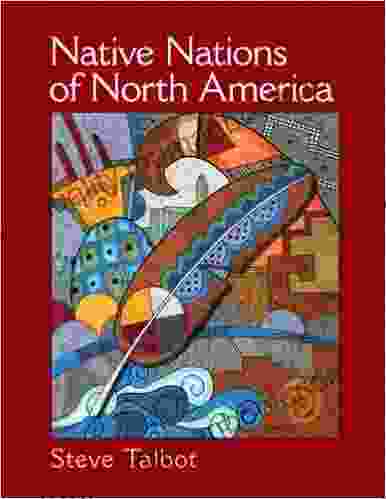
 Philip Bell
Philip BellNative Nations of North America: A Comprehensive Guide
North America is home to a...
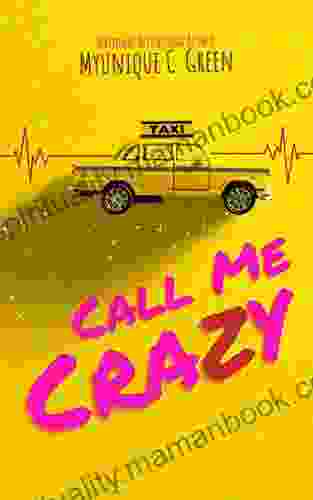
 Jackson Hayes
Jackson HayesCall Me Crazy: My Unique Journey with Green
In the kaleidoscopic tapestry of life, where...
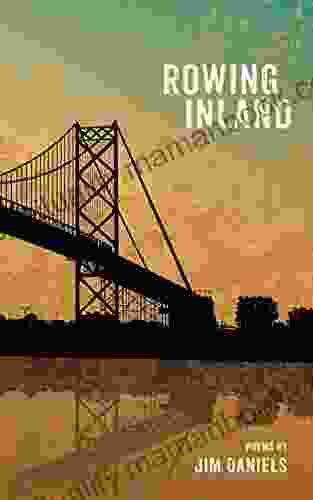
 Graham Blair
Graham BlairUnveiling the Literary Treasures of Michigan: A Journey...
The literary landscape of...
4.7 out of 5
| Language | : | English |
| File size | : | 778 KB |
| Text-to-Speech | : | Enabled |
| Screen Reader | : | Supported |
| Enhanced typesetting | : | Enabled |
| Word Wise | : | Enabled |
| Print length | : | 229 pages |


